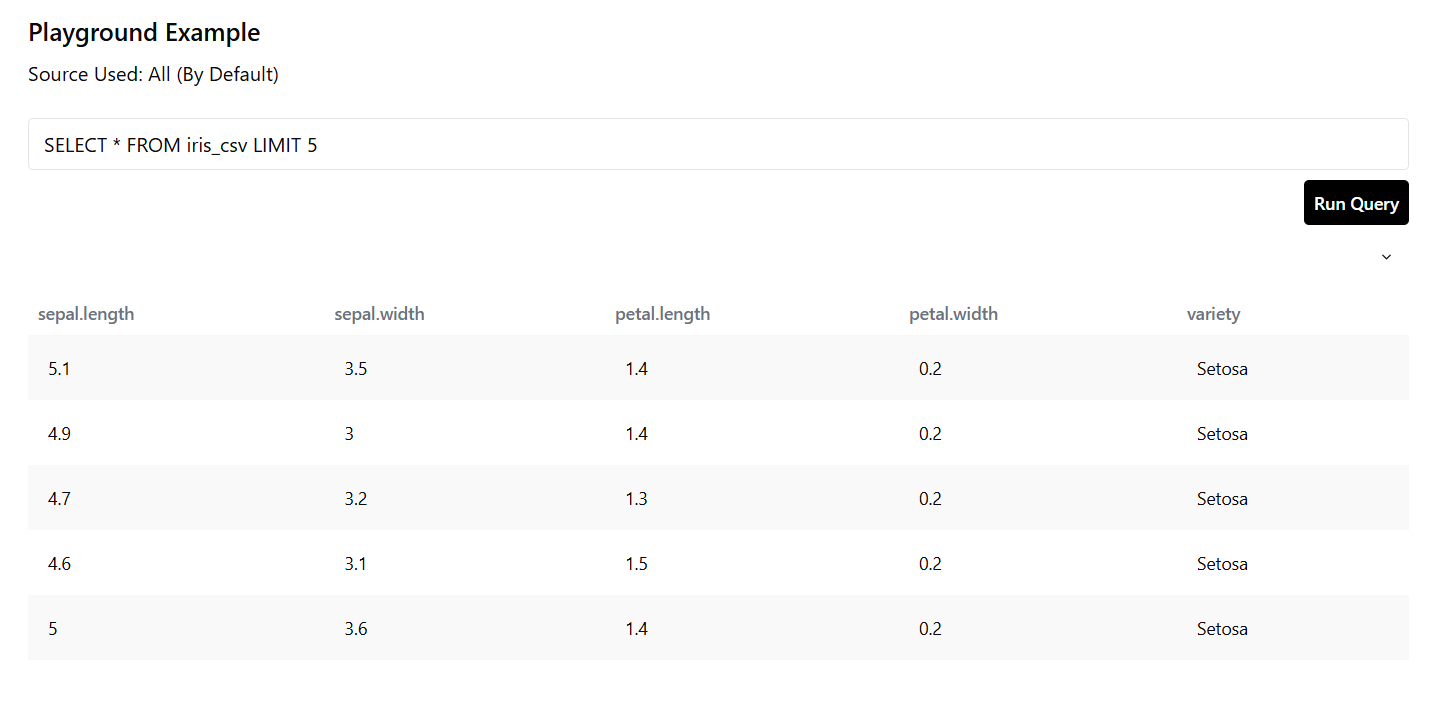playground function allows you to create an interactive SQL playground within your application. It provides a dynamic interface for querying connected data sources and visualizing results directly.
Parameters
label(str): The display label for the playground component. This is used for identification and UI rendering.query(str): The SQL query string to execute. This supports standard SQL syntax and can includeSELECT,JOIN,WHERE, etc.source(str, optional): (Optional) The name of the specific data source to query. If not provided, the function attempts to auto-detect the data source from the SQL query itself. (See “Default Behavior forsource” below)size(float): (Optional) The width of the component in a row. Defaults to1.0(full row).

source is auto-detected as users.
Note: Auto-detection works best when the query has a clear FROM or JOIN clause.
Returns
pd.DataFrame: The resulting DataFrame after executing the query. You can use it for further processing or visualization.
Usage Example
Here’s how to create a simple playground:Query Execution
The playground component:- Auto-loads any saved query state (if user modified the query previously).
- Runs the SQL query against the provided or detected data source.
- Renders the result interactively in the frontend.
Error Handling
- Handles invalid queries and missing data sources gracefully
- Captures and displays query errors in the UI
- Logs detailed debug information for troubleshooting
Best Practices
- Use meaningful labels to distinguish multiple playgrounds.
- Prefer explicit
sourcewhen working with complex queries or joins. - Always review auto-detected source for correctness.
- Use appropriate
WHEREclauses to limit large datasets. - Handle exceptions gracefully to improve user experience.
Related Functions
query(): Executes SQL queries directlyget_df(): Retrieves full datasets

